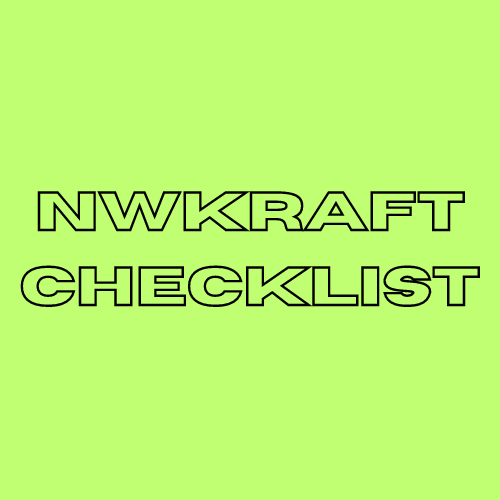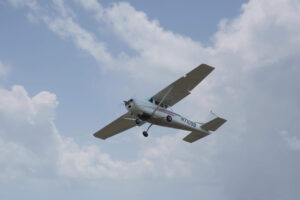Navigating the complexities of flight planning requires a thorough understanding of various factors that can impact a flight. The NWKRAFT checklist is an invaluable tool for pilots, serving as a mnemonic to remember critical preflight action items. This guide delves into the NWKRAFT acronym, explaining each component and its importance in ensuring safe and efficient flight operations.
Understanding NWKRAFT
NWKRAFT stands for:
- N – NOTAMs
- W – Weather
- K – Known ATC Delays
- R – Runway Lengths
- A – Alternates Available
- F – Fuel Requirements
- T – Takeoff and Landing Distances
These elements are derived from 14 CFR 91.103, which mandates pilots to be familiar with all pertinent information before commencing a flight. Let’s explore each component in detail.
N – NOTAMs
NOTAMs (Notice to Air Missions) provide crucial information about potential hazards along the flight route or at specific airports. These alerts can include temporary flight restrictions, runway closures, or changes in navigational aids.
- Accessing NOTAMs: Pilots can obtain NOTAMs through flight briefing facilities, aviation apps like ForeFlight, or websites such as the Federal NOTAM System (FNS).
- Importance: Reviewing NOTAMs ensures pilots are aware of any changes or hazards that could affect their flight, allowing for necessary adjustments to the flight plan.
W – Weather
Weather conditions are a significant factor in flight safety. Pilots must consider current and forecasted weather at departure, en route, and destination points.
- Weather Sources: Use resources like 1800wxbrief.com, aviationweather.gov, or weather briefing calls to gather accurate weather data.
- Key Considerations: Evaluate ceiling and visibility, wind conditions, turbulence, thunderstorms, icing potential, and temperature/dew point spreads. Be prepared with alternate plans if weather conditions change unexpectedly.
K – Known ATC Delays
ATC Delays can arise due to weather, air traffic congestion, or other factors.
- Checking Delays: Known delays can be checked on the FAA Flight Delay Information website.
- Planning for Delays: Knowing about delays allows pilots to adjust departure times, carry additional fuel, or plan alternate routes to avoid congested areas.
R – Runway Lengths
Understanding runway lengths at departure, destination, and alternate airports is crucial for safe takeoff and landing operations.
- Sources: Find runway length information in airport diagrams, aeronautical charts, or Chart Supplements.
- Considerations: Ensure the runways are suitable for the aircraft’s performance capabilities, especially under varying weather conditions and load factors.
A – Alternates Available
Alternate airports are essential backup options if landing at the planned destination becomes impractical.
- VFR and IFR Requirements: While VFR flights do not mandate alternate airports, it is wise to have one in mind. For IFR flights, having at least one alternate airport is required, especially if weather conditions at the destination are marginal.
- 1-2-3 Rule: Select an alternate if the weather forecast at your destination does not meet the criteria of having a ceiling of at least 2,000 feet and visibility of 3 statute miles, within one hour before and after your ETA.
F – Fuel Requirements
Proper fuel planning is vital to ensure sufficient reserves for the entire flight, including unexpected deviations.
- Regulatory Minimums: For VFR flights, the minimum fuel requirement is enough for the flight plus 30 minutes during the day and 45 minutes at night. For IFR flights, enough fuel for the flight plus 45 minutes.
- Personal Minimums: It’s prudent to plan for more than the minimum required fuel to account for unforeseen circumstances.
T – Takeoff and Landing Distances
Calculating takeoff and landing distances is essential for assessing whether the aircraft can safely operate at the planned airports.
- Performance Charts: Use the Pilot’s Operating Handbook (POH) and Airplane Flight Manual (AFM) to determine these distances.
- Factors to Consider: Include aircraft weight, weather conditions, and runway surface conditions in your calculations. Utilize performance calculators or apps to simplify this process.
Conclusion
The NWKRAFT checklist is an indispensable tool for pilots, ensuring comprehensive preflight planning. By systematically evaluating NOTAMs, Weather, Known ATC Delays, Runway Lengths, Alternates Available, Fuel Requirements, and Takeoff and Landing Distances, pilots can mitigate risks and enhance flight safety. Commit the NWKRAFT checklist to memory, and use it consistently to ensure every flight is thoroughly planned and executed with precision.
FAQs
Q1: How can I remember all the elements of the NWKRAFT checklist? Regularly review and practice the checklist during your preflight planning to build familiarity. Mnemonics and repetition can aid in memorization.
Q2: What should I do if I encounter unexpected delays or changes during my flight? Stay flexible and adjust your flight plan as needed. Communicate with ATC for updated information and consider diverting to an alternate airport if necessary.
Q3: Why is it important to set personal minimums for fuel and weather conditions? Personal minimums provide a safety buffer beyond regulatory requirements, accounting for your experience and comfort level. They help ensure you can handle unexpected situations more effectively.




